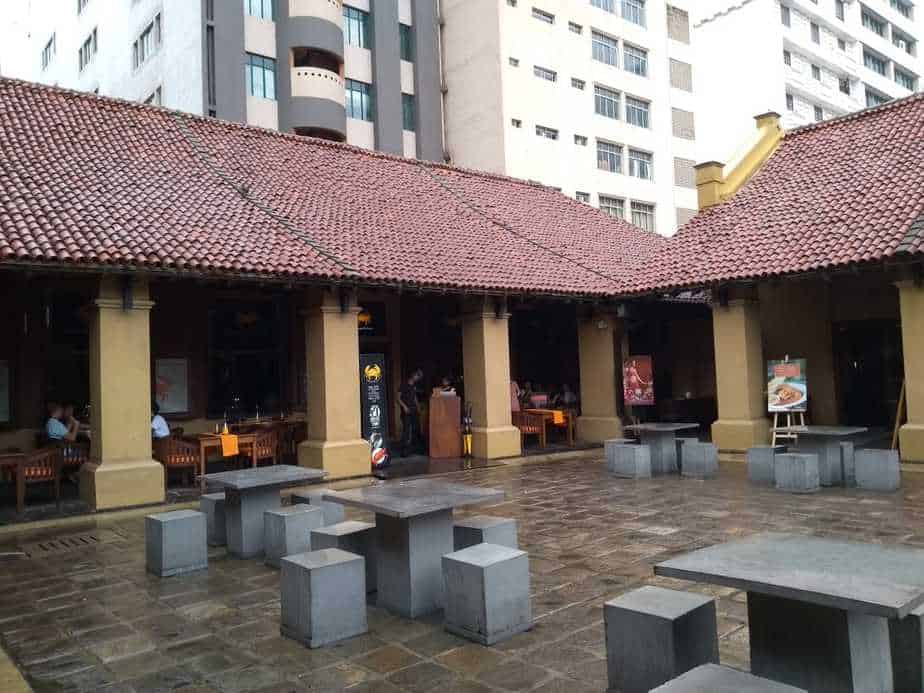
In the early 17th century, Sri Lanka was ruled partly by the Portuguese and partly by the indigenous kingdoms. To rid the land of overbearing Portuguese rule, the King of Kandy called on the Dutch to help defeat the Portuguese. What ensued was Dutch Ceylon — on winning the war, the Dutch retained some of Lanka’s lands and then slowly extended their territory.
And somewhere during this time, the Dutch set up a hospital in an area in Colombo which, to this day, is known as the Fort and remains a prized piece of real estate. Noting the area’s geographical link to the harbour, the Dutch used the hospital to serve their seafarers. Thereafter, the hospital building housed apothecaries and later, a local police station.
In the past few years, the building has been renovated and turned into a precinct with clothing and souvenir stores, tea houses, spas and seafood restaurants. However, every bit of its colonial charm has been retained by keeping the structure simple with teak beams, wooden staircases and open veranda areas.
Another curious piece of architecture is the Arcade Independence Square, which is colonial in nature and has served several varied purposes over the decades. This building, however, relates to British Ceylon. During the 19th century, the Dutch transferred their part of the island to the British in wartime defeat. And during this British era, an asylum named Jawatta Lunatic Asylum was built in Colombo with a keen architectural interest.
The British Governor, Sir William Gregory, who was instrumental in the decision to build the structure, stated — “The building will be a credit to the Colony. This building, whether the exact present plan be adhered to or modified, will be from its structural merits and the decorative character of the grounds attached to it, one of the future ornaments of this city”.
In the early 20th century, a larger mental health facility was set up in another part of Colombo and patients were relocated to the new facility, while this building was used to establish the University of Ceylon. Since then, the architectural marvel has been occupied by various departments of the Sri Lankan government, like the broadcasting department and the Auditor General’s office.
Today, however, the edifice stands as a unique collection consisting of stores hosting the most coveted brands of clothing and accessories, boutiques, dining areas and a cinema theatre, thereby offering shopping, entertainment and dining in one complex. Despite these new-age developments, Sir William Gregory’s words continue to ring true.
The complex still seems like it might contain an unexpected nook or cranny which might lead one back to the city’s colonial past. Adding to this postcard bijou is the granite sculpture of a pride of lions hosted in the atrium area and the paved cobblestone paths lit with old lamps.
Both the Dutch Hospital and the Arcade Independence Square are a testament to the city’s preservation efforts. And such efforts are especially important considering that Colombo has had a particularly turbulent past — the Portuguese occupation of the city ended when the Dutch took over, and the Dutch occupation ended when the British captured the island. All the while, the city remained strategically relevant as it functioned like a natural harbour and allowed the occupying powers to set up efficient military and trading ports. In fact, the non-anglicised term for the city is Kolamba, which means a fort or harbour in Sinhalese.
The colonial-era structures are important not just for their aesthetics but also for their symbolic purpose as reminders of the city’s history. And the steps taken by the government to not only preserve, but also add present-day functionality and beautification to such colonial structures is laudable.
The Delhi and District Cricket Association spent over Rs 10 crore on litigation and professional…
The authorised representative of Castrol Ltd. joined the raid and confirmed that the seized products…
Commuters have been advised to avoid certain roads between 12 noon and 11 pm on…
During a search of their vehicle, police found 1.068 kg of charas, 98 grams of…
The alleged assault is linked to a dispute over some staff members allegedly cutting the…
This will play a decisive role in providing villagers with legal proof of ownership and…